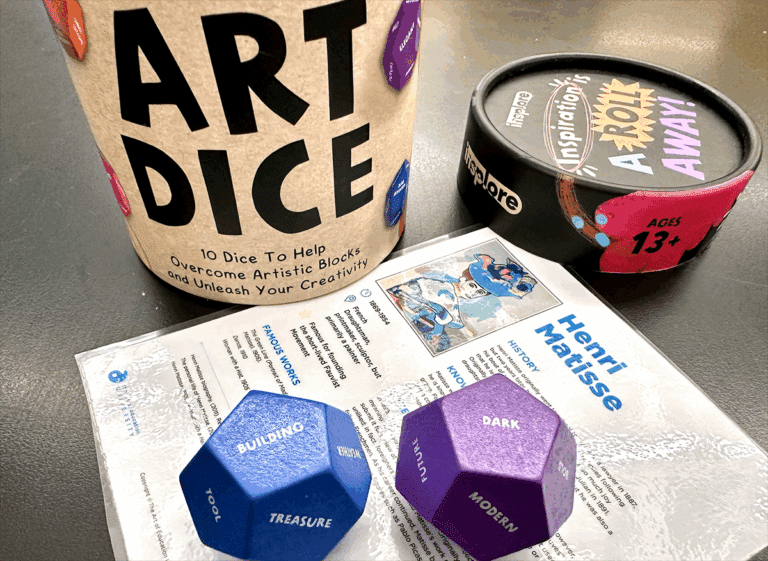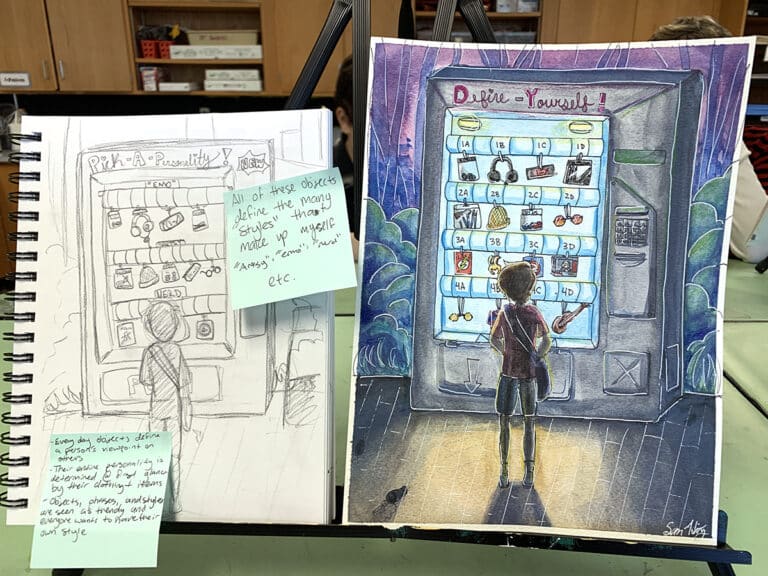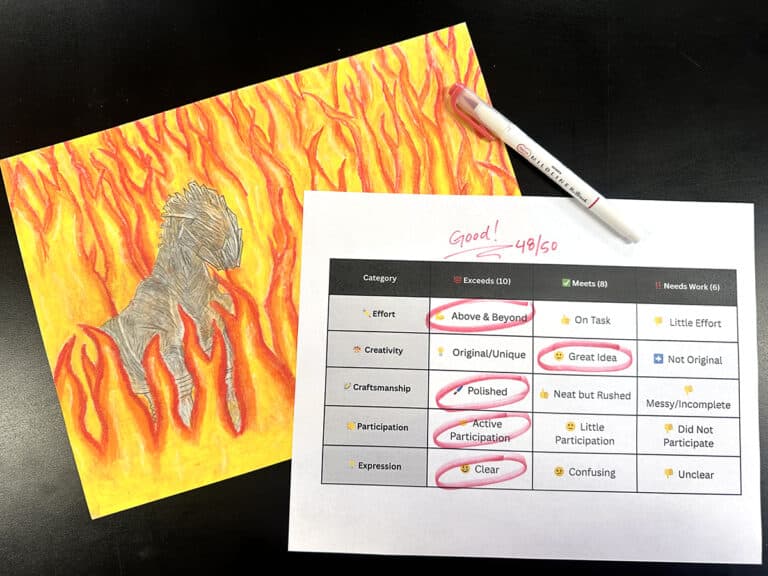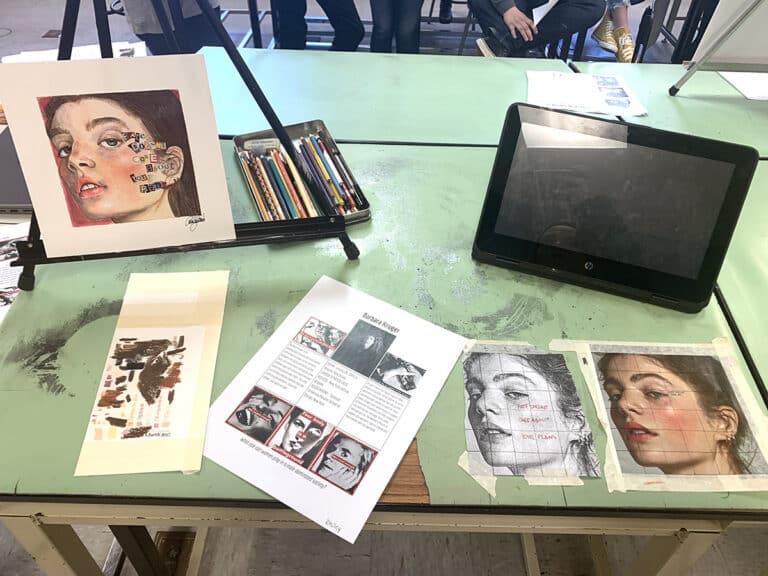As art teachers, we are certified to teach a ridiculously broad span of ages. It’s not uncommon to wonder if the grass might be greener on the other end of the age range. If you’ve thought about making a move up or down, read on. I’ve done it, and this is what I’ve learned.
The Comparison
Attitude
Elementary kids are sweet. I loved getting hugs and being treated like a celebrity in my days of teaching people shorter than me. Going to art was a thing to celebrate for the little ones, and it was a wonderful feeling to know that my class was such a treat. Most students were excited about art making, too. I smile every time I remember the sheer delight and amazement of my Kindergarteners as they made color mixing discoveries in the painting center.
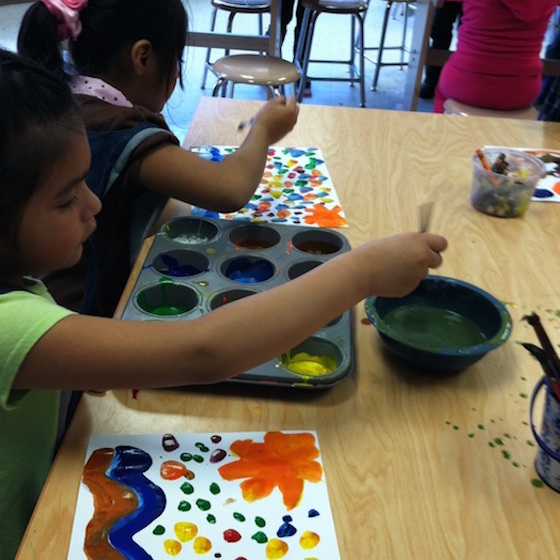
On first glance, that excitement and love of learning has disappeared by high school, replaced with indifference. This was hard for me at first, but I’ve come to realize that teens, for me, just took a bit of getting used to. The love of learning I value so much is there, it’s just disguised behind the huge driving force to be socially correct in front of peers at all times. The passion for art is there too if you know where to look. In fact, high schoolers can be pretty amazing if you take the time to get to know them and put in the effort to build relationships. When that effort pays off, it’s very meaningful. They also get sarcasm – a huge plus in my book.
Aptitude
Elementary students start as almost blank slates. For a teacher, this is both a challenge and an opportunity. Teaching little ones everything from the ground up is important and, at times, requires infinite patience. You know this if you’ve ever had to teach children to use glue (oh the horror) or scissors. However, the pace of mental growth is astounding to watch and humbling to be a part of. Plus, you get the opportunity to train them up the way you want them, which is a beautiful thing when you get to teach fifth graders you’ve had since their first day of school.
High schoolers come with built in skills, for the most part, that are there for you to mold and develop. Some students walk through your door with creative ability that could make the angels weep while others are still in the stick figure stage. Sure, there are skill differences in elementary but with older kids, it seems more pronounced because those who fall short are acutely aware of it. On the flip side, the ability of older students to understand and work with complex themes and ideas is extremely fulfilling. For example, below is some theme-based artwork dealing with destructive stereotypes and gun violence made by my Art 2 students.
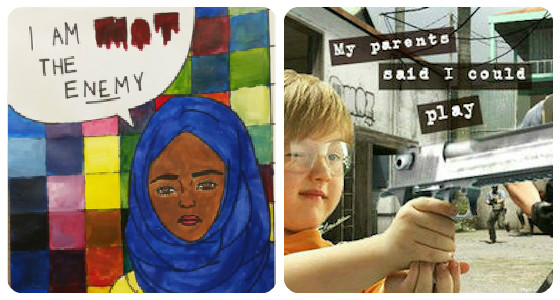
Behavior
Tattling, fighting, misuse of supplies, irresponsibility and general off task behavior occur in both elementary and high school; they just look different. With older kids, cell phone use will drive you crazy, with younger ones it was tattling that made me pull out my hair. In elementary school student tardiness, the bane of every high school, is never an issue, but I’ve yet to have a high schooler wet their pants.
School Environment
There are two key differences between elementary and high school in this area – non-instructional duty and teaching schedule. My elementary days were always hectic – morning duty, six back-to -back classes and afternoon duty to cap it off. My planning time was never longer than forty-five minutes and half an hour was a typical lunch.
My high school schedule is much slower-paced. With block scheduling, I have three ninety-minute classes and ninety minutes of planning. Everyday. It still seems luxurious. Lunch is forty-five minutes. I have no daily non-instructional duties, although there are a few weeks each school year where I have to fill in as needed to cover classes during my part of my planning time.
The Takeaway
Both elementary and high school have plusses and minuses. Who knows, maybe the best of both worlds is middle school (except for the hormones). While specific age groups might match better with different personalities, teaching art is pretty amazing no matter how old or young your students are.
If you’re just starting out at the elementary level and have no idea where to begin, don’t worry! Check out the Surviving Your First Year of Elementary Art PRO Learning Pack. You’ll discover strategies for classroom management that will help you run a calm, consistent classroom and learn how to take care of yourself throughout the transition.
Are you happy with the age range you teach?
What ages are your favorite and least favorite to teach?
Magazine articles and podcasts are opinions of professional education contributors and do not necessarily represent the position of the Art of Education University (AOEU) or its academic offerings. Contributors use terms in the way they are most often talked about in the scope of their educational experiences.


